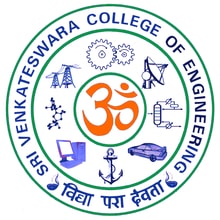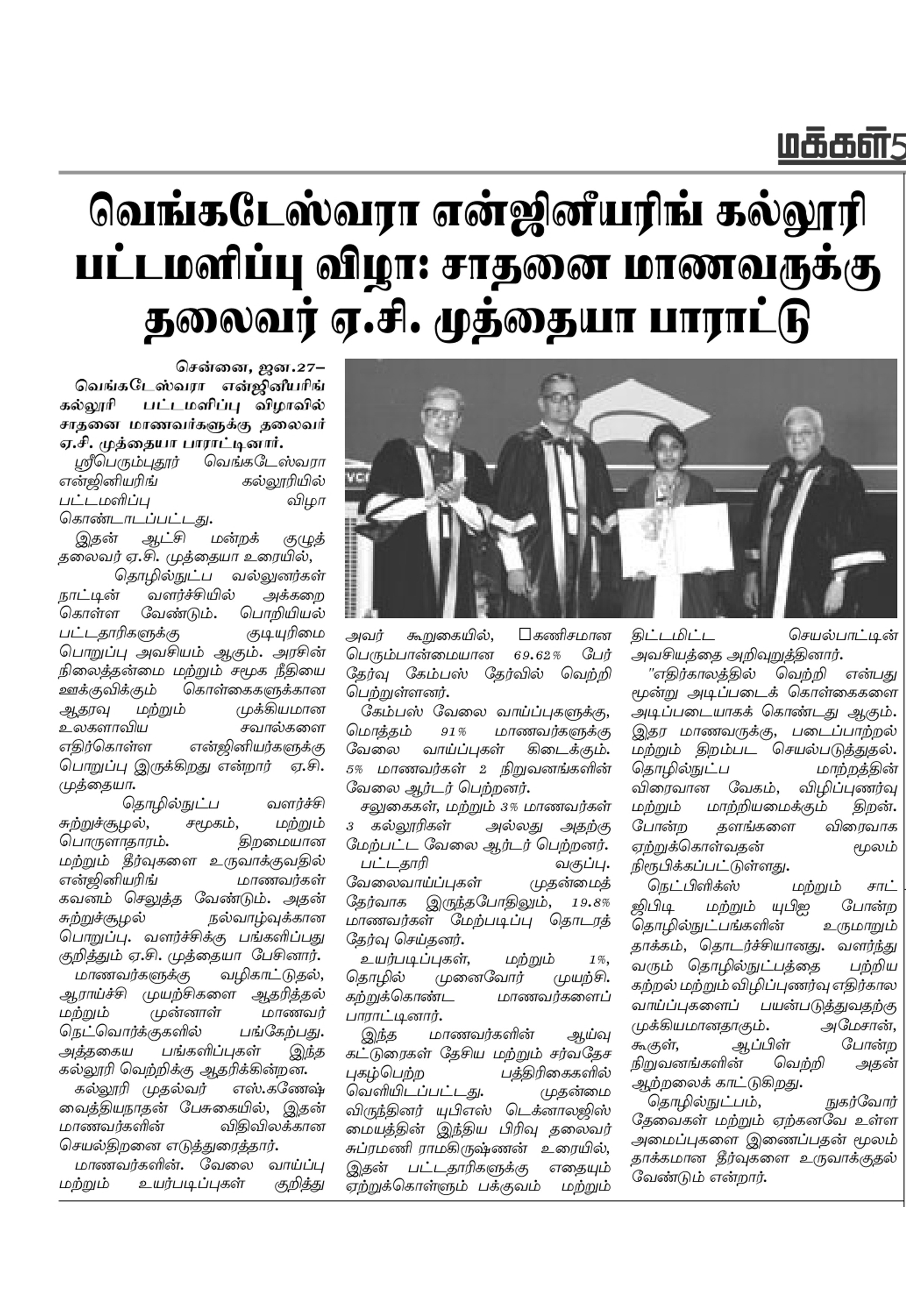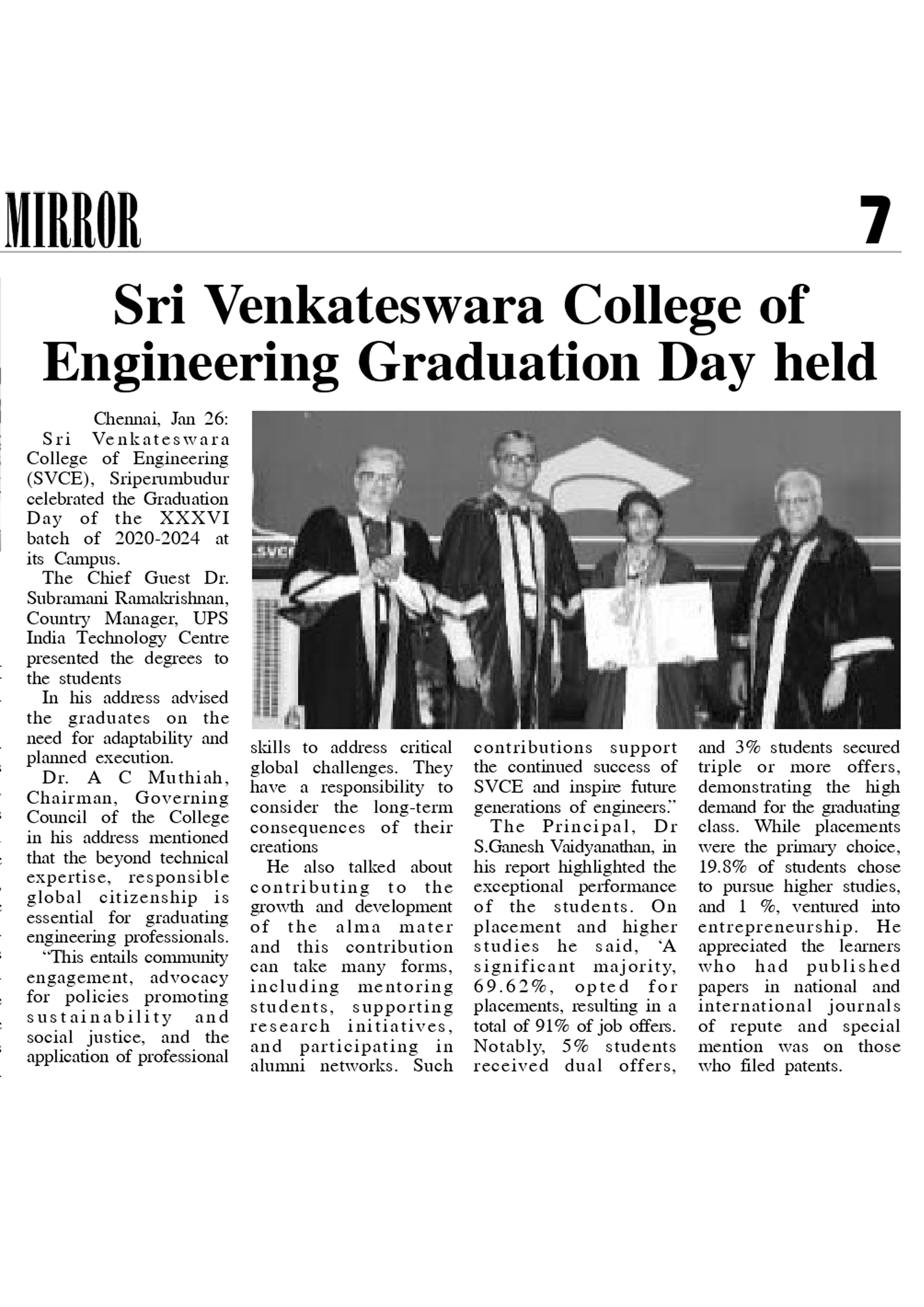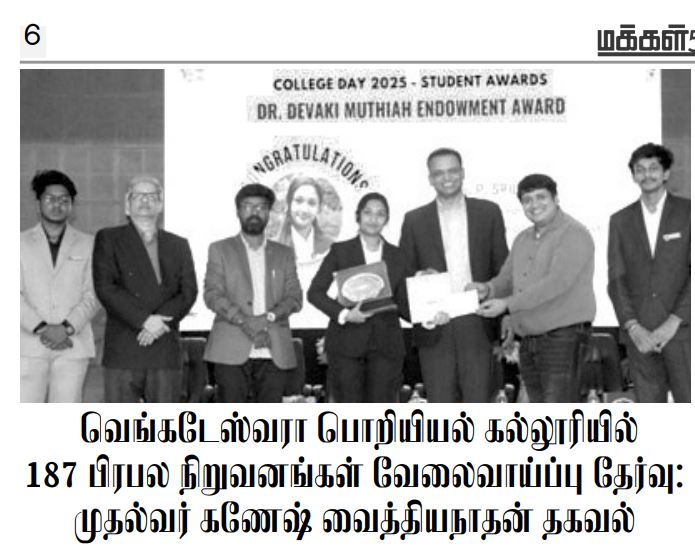 |
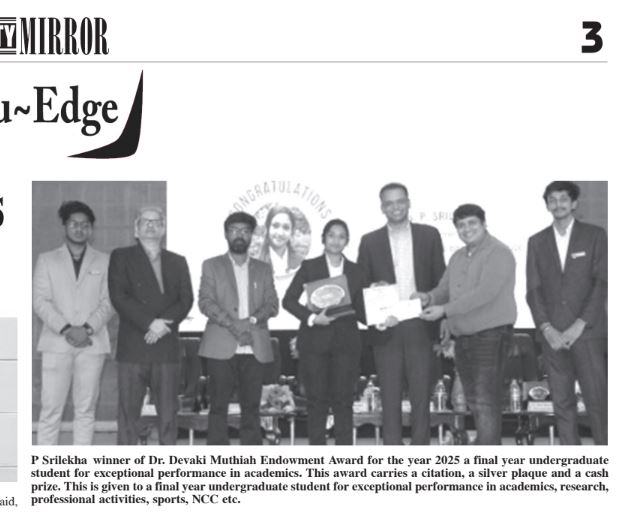 |
An article has been published in Hindu Tamizh dated 28/12/24 showcasing AICTE sponsored ATAL FDP on “Advanced Semiconductor Devices and AI Chips – Research Opportunities and Challenges” organized by SVCE.
We are pleased to inform you that the Department of Electrical and Electronics Engineering in association with MathWorks India Pvt Ltd & ARK Infosolutions Pvt Ltd is organizing a MATLAB DAY – MATLAB and Simulink Hands-on Session from 28/10/2024 to 29/10/2024 for II year and III year students of all the departments of SVCE to inculcate the required knowledge and widespread utility of campus-wide licensed MATLAB Simulink software.
Inauguration:
Venue: Multipurpose Hall
Date: 28/10/2024
Time: 9.30AM
The II and III year students of all the departments are requested to register in the following link: https://tinyurl.com/SVCE-MATLAB
MATLAB DAY Brochure and Agenda: Click Here to View


